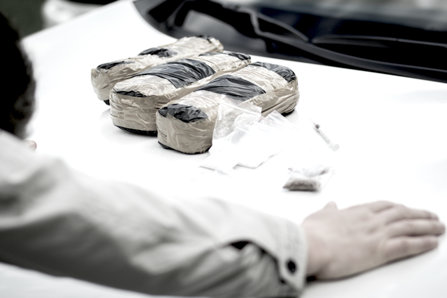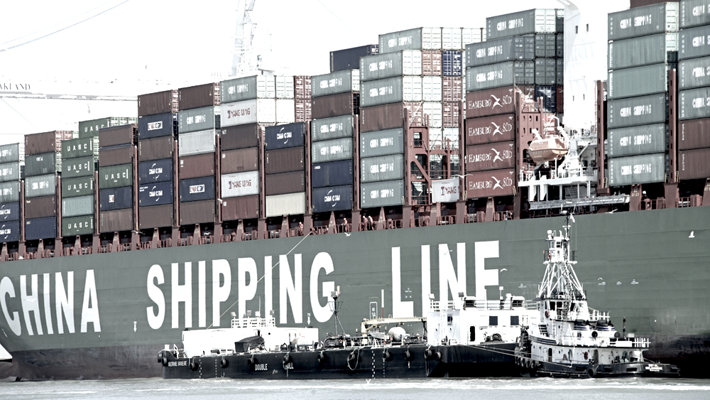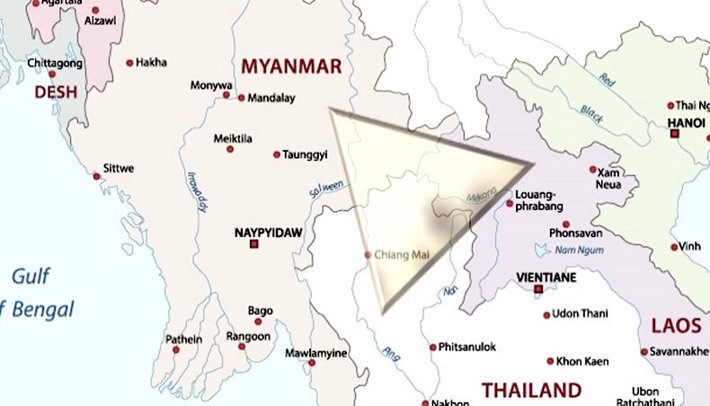Drug Trafficking from China—A New Look at a New Drug Threat

The American people face a new threat in the drug scene, yet another development in the constantly growing and expanding drug problem of the 21st-century. After decades of contending with illegal drug trafficking from Mexico and other South and Central American countries, the U.S. must now address drug trafficking from overseas as well. Case in point, law enforcement agencies and customs security offices are now finding illegally trafficked drug substances from China. (Brookings)
Drug trafficking from overseas is the new problem. It has likely contributed to the last four years' rampant increase in overdose deaths on American soil. This is not an issue that we had to contend with prior to the turn of the century. And any time the U.S. is stricken with a new problem, we have to change our approach and innovate new ways to address that new problem. Let’s take a moment in the following paragraphs to go over the details of drug trafficking from overseas, explore some of the statistics connected to this problem, and talk about possible solutions and remedies for reducing the problem. I did not find a reference re it being the “primary cause of the rampant overdose deaths of the last four years. Per the CDC, the problem is caused by the overprescribing and the introduction of synthetic opiates and drugs.
The Truth About 21st-Century Drug Trafficking
The truth about drug trafficking in the 21st-century is that the drug scene wears a different face than it once did. As the use of opioid pain relievers took off in the United States during the early to mid-2000s, millions of Americans became dependent on opioid-based drugs, whether those drugs were illegal narcotics like heroin, legal opioid pharmaceutical pain relievers, or synthetic opioid, hybrid drugs.

With millions upon millions of Americans falling prey to opioid addiction, Chinese drug cartels saw an opportunity to manufacture synthetic opioids and ship them to the United States along with the millions of products that China was already shipping to the U.S. every year.
Drug trafficking today is no longer limited to drug smuggling over U.S. land borders. Now we must also contend with drugs coming into the United States via shipping containers and cargo airplanes.
A news piece from the San Diego Union-Tribune (cited at the end of this article for more information) focuses on the details of international drug trafficking, showing that much of the opioid problems we now face can be traced back to illegal drug labs. In a citation from that article:
“Flowing in one direction, this fentanyl pipeline runs through Mexican cartel strongholds and heads north on well-established drug trafficking routes…”
“Flowing in one direction, this fentanyl pipeline runs through Mexican cartel strongholds and heads north on well-established drug trafficking routes. It funnels 80 percent of the drug through the San Diego border before dispersing throughout the U.S. The pipeline flows in another direction, as well, direct from Chinese laboratories to U.S. customers through the mail, bringing small, hard-to-detect packages of extremely pure fentanyl to suburban doorsteps. Both channels are feeding a deadly epidemic, moving a drug so potent that the equivalent of a few grains of table salt can be fatal.”
The news piece goes on to discuss the delicate and complex nature of confronting other nations, nations that are the source of drugs found on the streets of American cities:
“Sealing the fentanyl pipeline, however, has proven to be thus far an insurmountable challenge. The effort involves navigating delicate political relations with China and Mexico, addressing weaknesses at U.S. borders and within international mail systems that continue to allow narcotics to slip through unnoticed, battling nimble and powerful drug traffickers, and trying to keep up with enterprising chemists who constantly skirt drug controls with new formulations.”
Forcing Opioid Addiction Back
The American people have to wake up to the dangers of opioids. We can no longer blindly accept opioid pharmaceuticals as being supposedly “safe” and “totally helpful.” And we need to put in a far greater effort to cut back on our reliance on opioid painkillers as being the primary solution to the chronic and acute pain problems that we face.
In a direct quote from a Brookings research paper on opioid trafficking from China:
“Asian drug trafficking remains a serious threat to both China and the United States. In order to confront this common threat, China and the United States have taken numerous steps to cooperate in the interdiction of cross-border drug trafficking…”
“Asian drug trafficking remains a serious threat to both China and the United States. In order to confront this common threat, China and the United States have taken numerous steps to cooperate in the interdiction of cross-border drug trafficking. Together, they have made outstanding achievements in the prevention of Asian drug trafficking and in the eradication of opium poppy cultivation in the Golden Triangle region that comprises parts of Myanmar, Vietnam, Laos, and Thailand. Bilateral cooperation, however, has not been wholly successful, and Beijing and Washington face a daunting set of challenges regarding cross-border drug trafficking. The two nations must reconsider both new and old challenges in both regional and global contexts in their efforts to promote counter-narcotics cooperation.” (Brookings)

There is much to do going forward to curb opioid trafficking and opioid addiction rates in the U.S. To start, we need to drastically reduce our reliance on opioid painkillers to “fix” our pain problems. We took our nation in the wrong direction when we first began to use painkillers as a primary approach to resolving our pain.
How Can We Reduce the Problem?
When the American Medical Administration began to work with pharmaceutical manufacturers to institute opioid painkillers as being the primary method for addressing pain, we took a step towards a bad place in society. Opioid painkillers started the addiction crisis our nation is now fixed in, and we need to take a series of steps in a direction away from opioid painkillers if we are going to reduce the addiction crisis.
We also need to increase our efforts in diplomacy and cooperation with China and other Asiatic countries. We’ve never had to liaison with China and Southeast Asia on the subject of drug trafficking, but now is the time to test our skills in diplomacy to work with these countries and to help them prevent drug trafficking.
Working Together to Reduce a Drug Addiction Epidemic

An article published in the BBC news indicated that China was considering erecting the death penalty for certain, extreme drug crimes. This is a pretty major statement to see that China has its own zero tolerance for drug labs and drug trafficking. China and the United States wants the same thing, i.e. no drug trafficking. So, rather than blaming the entire nation of China for the crimes of a few thousand Chinese drug criminals, we should instead work with China on brainstorming ways to reduce trafficking.
We also need to work on rehabilitating those who are currently addicted to opioids. This is called “Demand-side Tactics.” The Substance Abuse and Mental Health Services Administration estimates that there are about eight million Americans who are addicted to opioid drugs. As long as there are so many Americans who are hooked on opioids, there will be a demand for these drugs, and you can bet that someone will find a way to get drugs into the U.S. to meet this need.
When we help people get off of drugs and alcohol through the help of addiction treatment at drug and alcohol rehab centers, we reduce the demand for opioid drugs. When we reduce the demand, the supply also goes down, following the simple laws of economics. For as much effort as we put on working with China and working on strengthening our border and shipping ports, we need to put just as much if not more effort on treating, helping, and rehabilitating those in the U.S. who are currently hooked on opioids. Only in doing so do we stand a chance at reducing the need for the drugs amongst American addicts.
Last but not least, it would strongly behoove our nation’s prevention efforts if we took strong steps in educating the American people on the dangers of prescription painkillers, synthetic opioids from China like fentanyl, American-made synthetic opioids, and heroin. When people know the truth about drugs, they are far less likely to partake in substance abuse. When people know the risks, when they know the dangers, and when they know just how much harm they risk bringing on themselves when they take drugs, they are far less likely to experiment with drugs, to begin with.
The drug trafficking problem from China and other countries is growing. But this is a problem that we can all work on, together. If we take the right actions on the right orders of magnitude and if we are consistent with these actions, we can reduce and eventually eliminate the American drug addiction epidemic.
Sources:
- https://www.brookings.edu/research/asia-international-drug-trafficking-and-u-s-china-counternarcotics-cooperation/
- https://www.bbc.com/news/world-asia-china-42403250
- https://www.cdc.gov/drugoverdose/data/prescribing.html
- http://www.sandiegouniontribune.com/news/public-safety/sd-me-fentanyl-pipeline-20180617-story.html


 ®
®